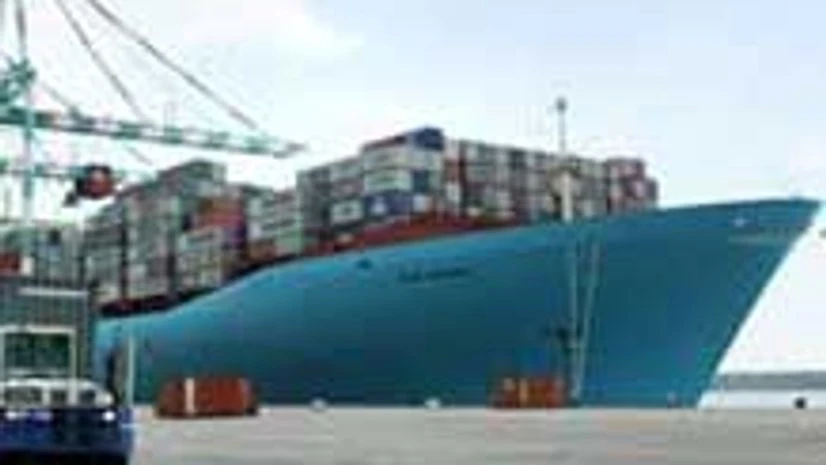India’s merchandise exports in February recorded their first decline in eight months, surprising analysts and dashing policy makers’ hope of meeting the $325-billion target for the current financial year. Given the rupee’s recent strength against the dollar, the outlook for export growth remains weak.
The country’s exports fell 3.67 per cent in the month to $25.68 billion, against $26.68 billion in the year-ago period. During the first 11 months of the financial year, exports stood at $282.77 billion, up 4.79 per cent over that in the corresponding period of 2012-13, data released by the commerce department showed on Tuesday.
Imports in the month, meanwhile, declined 17.09 per cent to $33.82 billion, against $40.79 billion in February last year. This drop was mainly on account of non-oil imports, which contracted 24.5 per cent to $20.12 billion from $26.66 billion in the year-ago period. Petroleum imports fell 3.1 per cent to $13.70 billion, compared with $14.13 billion in the same month last year.
The fall in exports and a greater decline in imports narrowed the country’s trade deficit by as much as 42.42 per cent to $8.13 billion, compared with $14.12 billion in February last year. This augurs well for the current account deficit, which is already narrowing. In the first 11 months, the trade deficit declined 28.95 per cent to $128.09 billion from $179.93 billion in the year-ago period.
To meet the commerce department’s $325-billion export target for the full financial year, the country will have to clock $42.23 billion of exports in March. This means a 37 per cent increase over that in March 2012-13, which could be difficult, given that the rate of annual export growth in March last year was only 6.97 per cent. The highest growth rate seen this financial year has been of 13.47 per cent in October.
Federation of Indian Export Organisations President Rafeeque Ahmed said: “Exports might finally end up between $310 billion and $315 billion, much below the target for the financial year.”
Exports of top items in the export basket — petroleum, engineering, gems & jewellery and pharmaceuticals — contracted in February. Petroleum exports plunged 10.36 per cent to $4.91 billion, engineering fell 2.76 per cent to $5.02 billion, gems & jewellery declined 4.18 per cent to $3.59 billion and pharma was down 1.62 per cent to $1.17 billion. These items constituted 57 per cent of total exports in February.
While problems faced by drug companies like Ranbaxy in the US, a top importer, were seen as a key reason for drop in pharma exports, CRISIL Research attributed the fall in petroleum products’ exports to a continued decline in global crude oil prices. “Crude oil prices averaged lower, at nearly $109 a barrel in February, compared with $116 a barrel at the same time last year.”
FIEO Director-General & CEO Ajay Sahai said: “It has come as a shock. We need to analyse what happened in a month.” However, India was not alone in seeing an export decline in February.
Keeping company was China, whose exports fell 18 per cent, Sahai added. FIEO attributed the fall to many factors, including sluggish manufacturing, contraction in global demand and restriction on current & capital accounts in a few Latin American countries. Also, it said, the withdrawal of Generalised System of Preferences for Indian products by the European Union (EU) aided the contraction. The EU is India’s largest export destination.
Exporters also blamed holding of duty drawbacks worth over Rs 10,000 crore for a cash crunch. However, the Central Board of Excise and Customs (CBEC) on Tuesday denied holding any drawback.
During the first eleven months of the financial year, imports declined 8.65 per cent to $410.86 billion from $449.79 billion in the corresponding period of 2012-13. Again, non-oil imports, which declined 13.4 per cent to $259.02 billion, were the main contributors. Imports of petroleum products rose 0.8 per cent to $151.84 billion.
But non-oil imports fell largely because of items other than gold. Iron and steel and electronic goods imports in February contracted 26.7 per cent and 14.4 per cent to $582.93 million and $2.11 billion, respectively. CRISIL Research said import contraction was driven by weak domestic demand and restrictions on gold imports.

)
